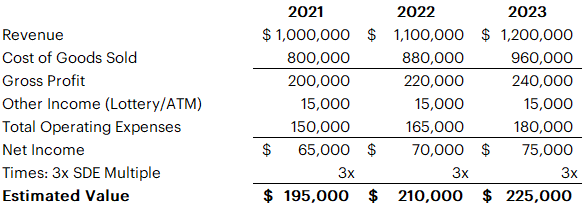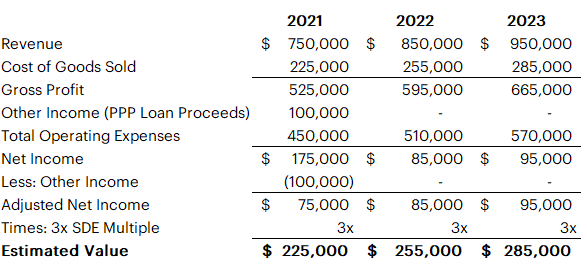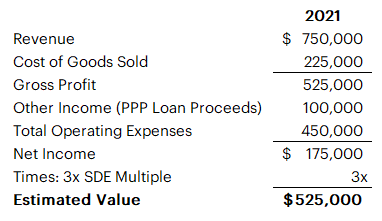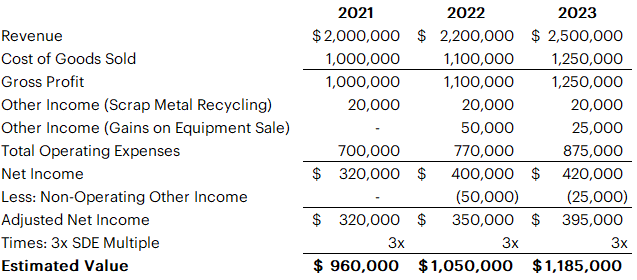12 Mar Other Income: When to Include and When to Remove
Written By: Todd Kutcher, CVA
(3 – 4 minute read)
Companies may report secondary sources of income that are not derived from their main business operations. To determine whether this income should be included in the cash flow of a business, you must first know what the income is related to. Often, this income is reported as:
- Interest
- Rent
- Sale and gain on an asset or investment
- Disposition of a business segment
- Gain from a legal case
- Insurance settlement
- Gain on early retirement of debt
- Grant income
- Any other one-time sale
These income sources could be classified as “other income,” “miscellaneous income,” or not otherwise be clearly identified on the business’s income statements. It is crucial to question the nature of the income, whether it is generated from a normal course of operations, and if this income is expected to continue in the foreseeable future (or post-closing). If the income is related to the core operations of the business and is likely to recur, then it should be included in the business’s adjusted income stream. If this income is non-recurring or will not continue, then it should be removed from the adjusted income stream.
The following examples illustrate the analysis of Other Income using common industry examples:
Example 1: Liquor Store with Lottery Income
It is common practice for liquor stores to report lottery or ATM fee income within Other Income on the income statements. Since this income is generated from the normal course of business, this income should be included in the liquor store’s adjusted earnings. The abbreviated income statement below illustrates the inclusion of this income:

Example 2: Restaurants with PPP Loan Proceeds
Many restaurants (among other industries) received a PPP Loan since 2020. The restaurant shown below received $100,000 in PPP income in 2021, which is not expected to recur in the future. Therefore, this income should be removed from net income, as shown below:

It is crucial to remove the non-recurring PPP Loan proceeds from net income, as neglecting this step could overstate the value of the subject restaurant significantly, as shown below:

Based on the above example, neglecting to remove PPP Loan proceeds would overstate the value of the subject restaurant by $300,000.
Example 3: Machine Shop with Multiple Other Income Sources
Certain businesses will report several items within Other Income. In such instances, each line item must be examined individually. The following example portrays a machine shop that recycles scrap metal, but has also sold equipment over the past three years:

As shown above, the subject company regularly recycles its excess scrap metal, which is derived from the ordinary course of operations and is therefore considered operating. However, the Company has also sold antiquated equipment, which is not considered operating income for this industry (despite it being reported in multiple years). Therefore, this income has been removed when calculating the adjusted net income.
When considering whether other income should be included in a business’s adjusted net income, it important to examine each line item within other income and consider the following:
- Is this form of income generated from the core operations of the business?
- Will a hypothetical buyer incur the benefits from this income?
- Will the income be recurring in each year?
If the answer to each question is ‘yes,’ then the income should probably be included within the adjusted net income. If the answer to any the above questions is ‘no,’ then the income needs to be further analyzed, and should probably be removed from the company’s net income in each year it is incurred.

